Mobile, onboard monitoring is not a one-size-fits-all market, thanks to the various types and functions of land transport fleets. In this feature, a&s collects tailored onboard monitoring solutions for specific usage scenarios.
The No. 1 priority for all mobile, onboard monitoring systems is to ensure driver and passenger safety, followed by car performance and fuel/fleet efficiency. Such complex, real-time calculations and precision requirements call for industrial PCs, with powerful CPUs operating on open-platform Linux. Day/night cameras that are capable of recording with clarity, regardless of surrounding weather or lighting conditions, are also a must. Video input ranges from one to 16 channels, and can be compressed and transmitted by said PC to a central server via GPRS, 3-G, WiFi, WiMax or CDMA. Due to often limited bandwidth availability, footage can only be transferred in real time at 30 fps in CIF or D1 resolution; or in HD at 10 to 25 fps.
Other typical requirements include a temperature range between -25 to 60 degrees Celsius (-13 to 140 Fahrenheit), ingress ratings of IP54 or IP66, a DVR/PC weight range of 2 to 5 kilograms (4 to 11 pounds), GPS integrated with maps, and up to16 event alerts simultaneously. SMS notifications can be sent out to notify management of abnormal driver behavior or vehicle condition, if necessary.
Specific Fleet Types & Requirements
.jpg)
Private Cars
Onboard monitoring systems in private cars are, in addition to enhancing driver and passenger safety, to prevent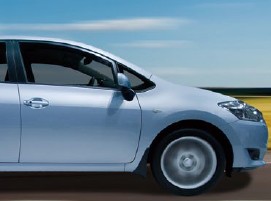 theft and robbery, and to provide evidence in the event of an incident. Driver safety can be enhanced through driver behavior monitoring and speed limit notifications; vehicular security can be enhanced through alarms on abnormal usage, such as doors opening/closing without correct keys.
theft and robbery, and to provide evidence in the event of an incident. Driver safety can be enhanced through driver behavior monitoring and speed limit notifications; vehicular security can be enhanced through alarms on abnormal usage, such as doors opening/closing without correct keys.
One to four channels of video input and a single video output are average. Footage is generally stored directly on the onboard DVR. Video transmission, while uncommon, can be done via 3-G in CIF or D1 resolution at 30 fps, but without the use of a central monitoring system as required by fleets. Such mobile systems are also often outfitted with GPS and infotainment capabilities, for maximum driving safety and passenger entertainment.
Taxis
Taxi drivers face the possibilities and risks of passenger disorder, personal attack and armed robbery every day,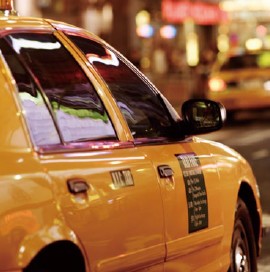 since they carry around large amounts of cash and are not able to vet strangers. The main purpose of onboard monitoring is, thus, to provide coverage and evidentiary information for the above. GPS is a must in order to facilitate fleet and crisis management; support for two-way communications between drivers and dispatchers is also often required.
since they carry around large amounts of cash and are not able to vet strangers. The main purpose of onboard monitoring is, thus, to provide coverage and evidentiary information for the above. GPS is a must in order to facilitate fleet and crisis management; support for two-way communications between drivers and dispatchers is also often required.
Similar to private cars, video input ranges from one to four channels with a single video output channel. Remote, central monitoring is not always specified, but can be done in CIF or D1 resolution at 30 fps, or HD at 10 to 25 fps. Alarm inputs and outputs are usually four and one, respectively.
Police Cruisers
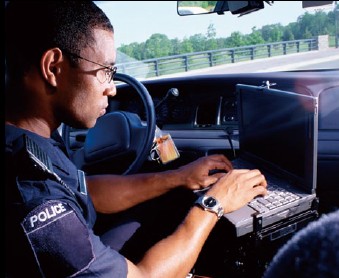 Police cruisers operate in extreme conditions under constant threats, both inside and outside. Officers behind the wheels may also need to deal with public complaints and lawsuits over their conduct in the field. It is crucial that video footage, along with GPS coordinates, is relayed back to the central dispatch — in real time or whenever necessary — so appropriate action or assistance can be arranged efficiently.
Police cruisers operate in extreme conditions under constant threats, both inside and outside. Officers behind the wheels may also need to deal with public complaints and lawsuits over their conduct in the field. It is crucial that video footage, along with GPS coordinates, is relayed back to the central dispatch — in real time or whenever necessary — so appropriate action or assistance can be arranged efficiently.
For evidentiary purposes, HD and local storage requirements are common; mobile DVRs for police use are usually IP54-rated, making them shock- and weather-resistant. Cruisers tend to have four alarm inputs and one alarm output, just like private cars.
Ambulances
Every year, tens of thousands of emergency response workers worldwide are injured or killed on the job. There.jpg) are also countless disputes over possibility patient negligence or mistreatment during transport. Having onboard monitoring can easily translate to millions of dollars in savings, in terms of lawsuits and compensations.
are also countless disputes over possibility patient negligence or mistreatment during transport. Having onboard monitoring can easily translate to millions of dollars in savings, in terms of lawsuits and compensations.
Real-time transmission is more commonplace than other fleet types, as additional assistance, medical advice or rerouting could mean life or death. Due to the sensitive nature of ambulances, onboard monitoring systems are generally equipped with eight alarm inputs and four alarm outputs, as well as privacy settings.
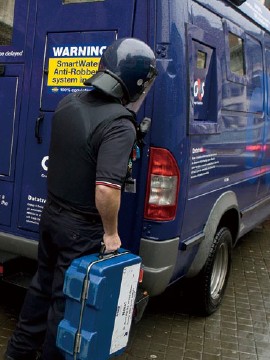 Cash-in-Transit Vehicles
Cash-in-Transit Vehicles
Cash and valuables such as jewelries and bonds in armored vehicles are obvious targets. Video input generally ranges from one to nine channels with a single video output channel. During daily operations, continuous surveillance allows the central command to know whether or not drivers are following protocols and designated routes. HD at 10 to 20 fps, along with exact GPS coordinates, distress signals and usual speeding alerts, is almost always demanded.
Public/School Buses
It is increasingly common for buses to install onboard monitoring systems, due to increasing numbers of daily commuters and higher risk of terrorist attacks or student misconduct. On buses, these systems provide visual evidence whenever there are disputes between passengers and drivers, such as fare payments, service or unruly behavior. Around each bus' exterior, there is a trend to outfit four to eight cameras to monitor turns and embarking/disembarking.
In general, up to 16 channels of video input are required. In addition to being able to record day and night with clarity, cameras on buses are required to withstand strong glares and shocks. Mobile DVRs for public buses are heavier at 3 to 5 kilograms (7 to 11 pounds) and IP66-rate, more rugged than most other fleet types. Bus DVRs are usually equipped with eight to 16 alarm inputs and four alarm outputs. Infotainment or media output can be added, predetermined and updated according to user preferences.
clarity, cameras on buses are required to withstand strong glares and shocks. Mobile DVRs for public buses are heavier at 3 to 5 kilograms (7 to 11 pounds) and IP66-rate, more rugged than most other fleet types. Bus DVRs are usually equipped with eight to 16 alarm inputs and four alarm outputs. Infotainment or media output can be added, predetermined and updated according to user preferences.
Increasingly, driver behavior monitoring is specified; for instance, driver fatigue levels can be monitored, speed limits can be set for predefined routes, and management or authorities can be alerted via SMS or email and access live footage. This enhances overall safety and response time.
Recent cases also show the application and integration of biometrics, for parents to be notified of their children's whereabouts.
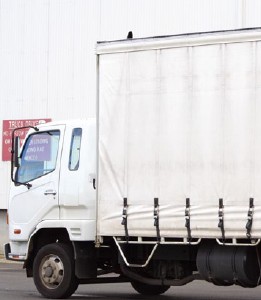 Freight Trucks
Freight Trucks
Freight trucks can be targets of crime because these vehicles transit goods of commercial value. Hence, monitoring systems have been extended from depots to vehicles on the move to enhance fleet and goods protection. As with all commercial vehicles, the main purpose of onboard monitoring is to prevent crime, enhance driver safety and fleet management. GPS and vehicular conditions (such as speeds and tire pressures) are a must, for management to fully grasp and react to safety and efficiency issues. Another important feature is three-way communications, among drivers and the central dispatch.
Industrial Tankers
Tankers used to transport gasoline, concrete, diesel and industrial chemicals are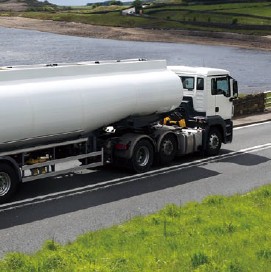 unique, in safety requirements and their risks as targets of theft or terrorist attacks. Hence, the main purpose of onboard monitoring systems on industrial tankers is to ensure protocol is followed, enhance driver and public safety, and provide driving records or event evidence.
unique, in safety requirements and their risks as targets of theft or terrorist attacks. Hence, the main purpose of onboard monitoring systems on industrial tankers is to ensure protocol is followed, enhance driver and public safety, and provide driving records or event evidence.
As with other commercial vehicles, GPS coordinates and automatic alerts for management and authorities are crucial, as any deviation, accident or attack could have disastrous consequences. Mobile DVRs and cameras for this application are usually IP54-rated.